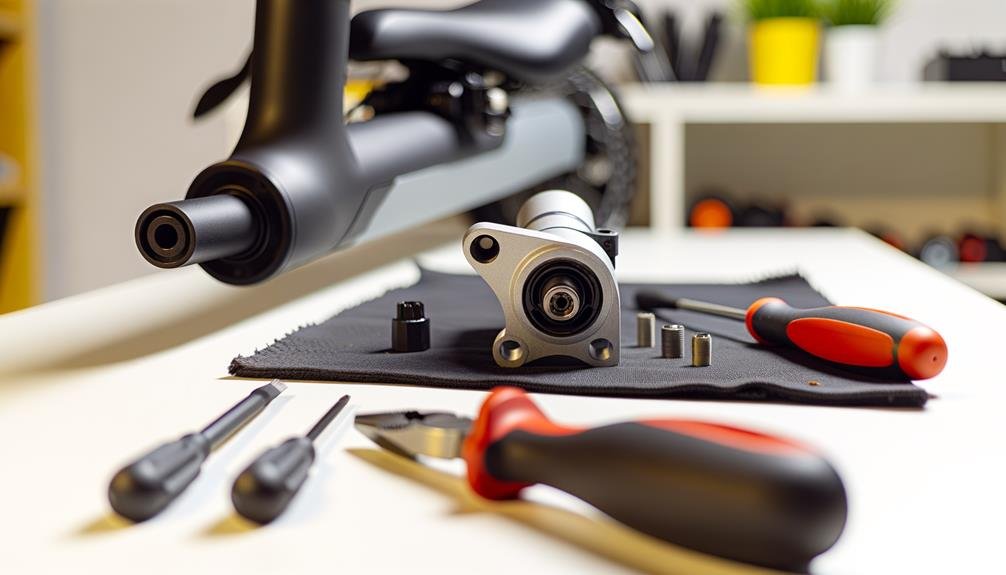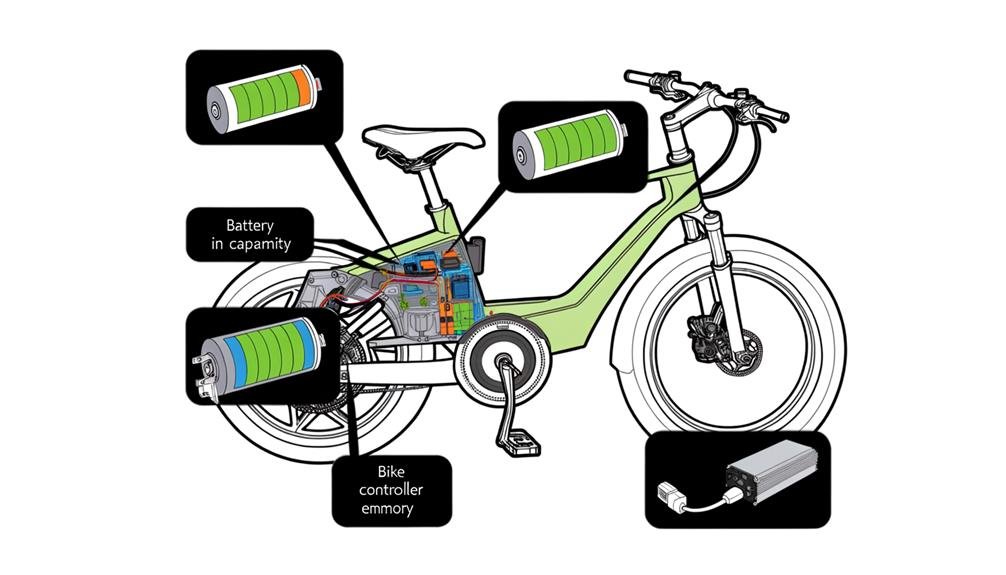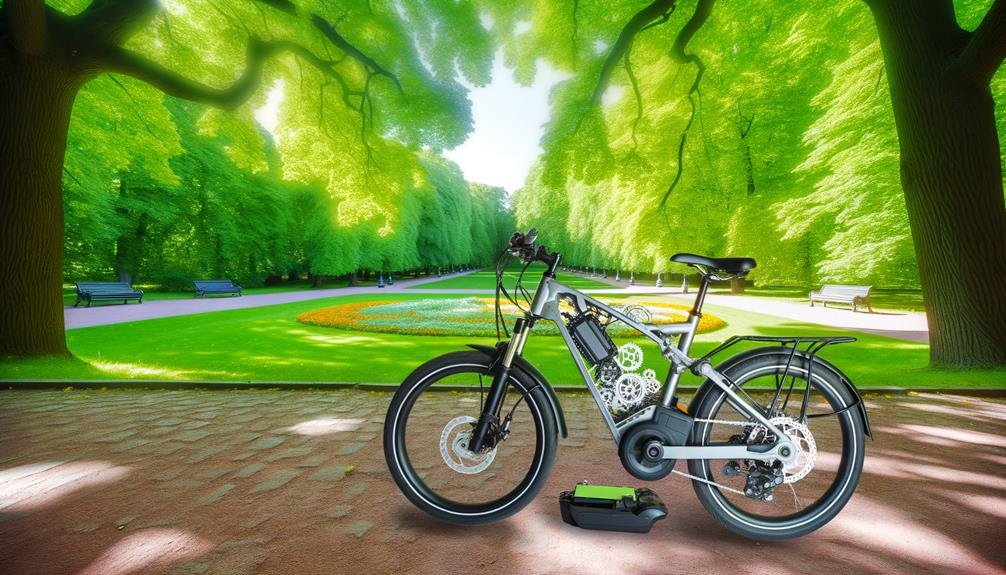Charles Miller is a veteran bike enthusiast with over 12 years of experience dealing with bikes as a mechanic. Despite immense love and expertise for...
Just as the horse and buggy gave way to the automobile, so too are traditional bikes being outpaced by their electric counterparts. We're all familiar with how an ebike can help us zip up hills with ease, but have you ever wondered what makes this possible?
The secret lies in a little device known as a torque sensor. It's this clever piece of technology that determines just how much help you get from your electric motor. But how does it work, and why does it make such a difference to your ride?
Well, strap in, because we're about to take a journey into the heart of your ebike.
- Key Takeaways
- Understanding the Torque Sensor
- Role of Torque Sensor in E-Bikes
- Torque Sensor Vs Cadence Sensor
- Benefits of Torque Sensors
- Impact on Biking Experience
- Maintaining Your Torque Sensor
- Choosing the Right Torque Sensor
- Advanced Torque Sensor Technologies
- Frequently Asked Questions
- Conclusion
Key Takeaways
- Torque sensors measure the force applied to the pedals and provide intuitive and responsive pedal assist.
- They offer a natural riding experience with minimal lag and adapt to varying terrains.
- Torque sensors require less force to activate the motor, enhancing efficiency and rider control.
- They enhance e-bike performance by detecting the exact amount of force applied to the pedals and adjusting the pedal assist level accordingly.
Understanding the Torque Sensor
In order to fully grasp the functionality of an e-bike, it's crucial to understand the role of the torque sensor, a device that measures the force applied to the pedals and provides an intuitive and responsive pedal assist.
E-bikes with torque sensors offer a natural riding experience with minimal lag, adapting to varying terrains. These torque sensors are particularly beneficial for off-road and technical riding situations as they require less force to activate the motor, enhancing efficiency and rider control.
Contrasting to the Torque Sensor is the Cadence sensor, which detects pedaling speed and offers binary on/off motor activation, suitable for more predictable and cruise-control type rides. However, the e-bike with a torque sensor gives the rider a more dynamic control over the e-bike's performance, responding to changes in force applied to the pedals.
Hybrid mid-drive e-bikes cleverly use a combination of both cadence and torque sensors, providing a refined riding experience.
Role of Torque Sensor in E-Bikes
We're now going to explore the role of torque sensors in e-bikes.
We'll first address the importance of torque sensors, then move on to their functionality and how they can enhance the performance of your e-bike.
It's crucial to comprehend how these sensors contribute to a more intuitive and responsive riding experience.
Understanding Torque Sensor Importance
Let's delve into the crucial role torque sensors play in e-bikes, as they measure the force we apply to the pedals, providing an intuitive and responsive pedal assist for a natural riding experience. Understanding torque sensor importance is vital to optimize your Electric Bike's performance.
| Torque Sensors | Cadence Sensors | Hybrid Sensors |
|---|---|---|
| Measure force applied to pedals | Detect pedaling speed | Combine torque and cadence sensing |
| Provide intuitive, responsive assist | Offer binary on/off activation | Refined riding experience |
| Minimal lag, natural ride | 1-2 seconds lag, cruise-control ride | Ideal for hill climbs |
Torque sensors significantly enhance the power output, making your ride smoother and more enjoyable. Their predictability and intuitiveness are primary reasons why they are preferred over other options.
Torque Sensor Functionality
Having understood the importance of torque sensors in optimizing your e-bike's performance, it's time we explore how they function and their role in e-bikes.
The torque sensor functionality is pivotal in providing a smooth and natural ride. Here's how they work:
- Torque sensors measure the force you apply to the pedals. This data is communicated to the e-bike's controller.
- The controller then uses this data to engage the motor, matching your effort and providing intuitive pedal assist.
- Torque sensors give you greater control over power and speed, offering minimal lag for a more responsive ride.
With these sensors, you can conquer varying terrains with ease, making your e-bike journey more enjoyable and efficient.
Enhancing E-Bike Performance
In elevating e-bike performance, the role of torque sensors proves instrumental, offering precise force measurement and intuitive pedal assist for an optimized riding experience. Torque sensors enhance e-bike performance by detecting the exact amount of force we apply to the pedals. The sensor then adjusts the pedal assist level accordingly, preventing us from exerting too much force and ensuring a smooth and enjoyable ride.
Furthermore, torque sensors offer a more natural and responsive riding experience. They've minimal lag, making the pedal assist more predictable and intuitive. This is particularly beneficial when conquering varying terrains. With torque sensors, we can ride with confidence, knowing the e-bike will respond to our exertions instantly and precisely, thereby enhancing our overall riding experience.
Torque Sensor Vs Cadence Sensor
When comparing torque sensors and cadence sensors on e-bikes, we find that the former measures the force applied to the pedals, while the latter detects pedaling speed. This distinction between torque and cadence sensors becomes crucial when considering the type of riding experience desired.
Here's a breakdown:
- A torque sensor offers an intuitive, responsive ride. It reacts to the amount of force you apply, giving you control over the e-bike's power. The sensor's virtually lag-free response enhances the natural riding feel.
- A cadence sensor, on the other hand, provides a binary, on/off motor activation based on pedaling speed. This can lead to a 1-2 second lag, resulting in a more cruise-control type ride.
- Mid-drive e-bikes often use both cadence and torque sensors, combining the benefits of both for a hybrid approach. This pairing provides instant feedback and intuitive power selection, offering a versatile ride experience.
In the debate of cadence vs torque, it's not about choosing one sensor or a cadence. It's about understanding the different experiences torque and cadence sensors provide, and choosing the one that meets your riding needs.
Benefits of Torque Sensors

Building on our understanding of torque sensors and their distinction from cadence sensors, let's now explore the many benefits of torque sensors in e-bikes.
The foremost benefit of torque sensors is their ability to provide a more intuitive and responsive pedal assist. This essentially means that the force you apply to the pedals is directly proportional to the power output of the electric bike, resulting in a smoother and immediate response.
Furthermore, torque sensors are highly beneficial in off-road and technical riding situations. Their responsive nature allows for quick adjustments in power output, enhancing the rider's control and overall cycling experience. This is a stark contrast to bikes equipped with cadence sensors, which often require a more forceful pedal stroke to activate the motor.
Another significant advantage of torque sensors is their ability to provide a more natural riding experience. They activate based on the force exerted on the pedals, making the transition from pedalling to motor assistance seamless. This decreases the rider's fatigue and increases the enjoyment of the ride.
Impact on Biking Experience
The use of torque sensors dramatically transforms the biking experience, offering a more intuitive, responsive, and natural pedal assist that enhances rider control over power and speed. Unlike an e-bike with a cadence sensor which provides a consistent level of assistance, torque sensors allow for a smoother transition and greater control.
- Riding Experience: Torque sensors mimic the feel of traditional biking. The harder you pedal, the more assistance you receive. This dynamic responsiveness empowers riders to take control of their speed and power output.
- Terrain Adaptability: Whether you're climbing steep hills or cruising on flat roads, torque sensors adapt to the varying demands of the terrain. They provide additional power when you pedal harder, creating a more natural and dynamic riding experience.
- Rider Engagement: With a torque sensor, your biking experience is as engaging as you want it to be. You can choose to pedal harder for a workout or ease off for a more leisurely ride.
In essence, the impact on biking experience is significant with torque sensors. They provide a more refined, responsive, and adaptable ride, connecting us more intimately with our journey, and shifting the paradigm from mere transportation to an exhilarating experience.
Maintaining Your Torque Sensor

To ensure the longevity and accuracy of your e-bike's torque sensor, it's crucial we adhere to regular maintenance practices such as cleaning, checking connections, and periodic calibration as per the manufacturer's guidelines.
Dirt and debris can interfere with the delicate workings of torque sensors, so a thorough clean of the sensor area is recommended. This prevents any build-up that could distort the sensor readings, impeding the smooth operation of your e-bike in the world of electric cycling.
Next, we need to check the connections and wiring of the sensor. Any wear or damage can affect the sensor's ability to accurately gauge the force the rider pedals. Promptly addressing these issues is key in maintaining your torque sensor's performance and the overall riding experience.
Periodic calibration is another important step. This ensures that your sensor remains accurate, providing reliable feedback and control for your e-bike. Should you notice any irregularities, we recommend seeking professional maintenance to diagnose and resolve any issues.
Choosing the Right Torque Sensor
In choosing an ideal torque sensor for your e-bike, you'll need to consider factors such as your riding style, preferences, biking goals, budget, and environment. The right sensor can drastically improve your ebike experience, enabling it to deliver power precisely when you need it.
First, torque sensors make for a more intuitive ride. They're responsive, delivering power based on the force applied to the pedals. This makes them ideal for technical terrains where control over speed and power is paramount.
Second, consider your biking goals. If you're looking for a more natural, road-bike feel, torque sensors are your best bet. They provide a seamless blend of human and motor power, enhancing the overall ride experience.
Finally, budget plays a significant role. Torque sensors are generally more expensive than their cadence counterparts. However, the benefits they provide, such as improved control and a more natural ride, make them worth the investment.
Choosing the right torque sensor is a crucial decision that will shape your ebike experience. By taking these factors into account, you'll be able to find a sensor that not only fulfills your needs but also enhances your ride.
Advanced Torque Sensor Technologies

Having explored how to choose the right torque sensor, let's now examine the advanced technologies utilized in these sensors that make them a game-changer in e-bikes.
Advanced torque sensor technologies have revolutionized the ebike experience. These sensors measure the force you apply to the pedals, delivering power depending on your pedaling. Unlike their counterpart, the cadence sensors, which are binary and activate the motor based on pedaling speed, torque sensors offer a more intuitive and responsive ride. They provide instant feedback, resulting in minimal lag and a natural riding experience.
To further enhance the rider's experience, especially on varying terrains, mid-drive e-bikes deploy a combination of cadence and torque sensors. This hybrid system offers the best of both worlds – consistent assistance from the cadence sensor and a refined, intuitive response from the torque sensor.
In essence, advanced torque sensor technologies have transformed e-bikes into highly responsive machines that effortlessly mimic our natural pedaling rhythm. They've created a sense of belonging, where the bike and rider act as a single, harmonious entity.
Frequently Asked Questions
Is Torque Sensor Worth It on a Ebike?
We believe a torque sensor's worth it on an ebike. Its efficiency enhances riding experience, while durability lessens maintenance costs. We see it as a valuable investment, offering a natural, intuitive feel when pedaling.
How Does a Torque Sensor on an Ebike Work?
We're revolutionizing ebike riding with torque sensors. Through sensor calibration, these marvels measure applied force, boosting efficiency. Regular sensor maintenance ensures optimal performance. Indeed, this sensor technology is transforming ebike experiences, making us all part of the future.
What Is the Difference Between a Speed Sensor and a Torque Sensor?
In sensor selection, we value torque versatility for its responsiveness. Speed sensor advantages include budget-friendliness. Torque sensor limitations exist, but its natural feel outweighs them. Sensor integration challenges persist in finding balance between the two.
What Is a Torque Sensor?
We're talking about the heart of ebikes – torque sensors! They're the superheroes of sensor types, masterfully measuring torque and needing careful installation, maintenance, and calibration. They keep our rides smooth, intuitive, and downright enjoyable.
Conclusion
In sum, we've seen how torque sensors play a pivotal role in enhancing our ebike experience.
For instance, imagine tackling a steep hill. With a torque sensor, your ebike intuitively adjusts power to your pedaling effort, making the climb feel almost effortless.
This advanced tech not only provides superior control and efficiency, but also extends your bike's battery life.
It's clear, investing in a quality torque sensor can truly transform your biking adventures.

Charles Miller is a veteran bike enthusiast with over 12 years of experience dealing with bikes as a mechanic. Despite immense love and expertise for his Tacoma, he rides his Trek Ebike more. Anytime you meet him, you’ll either hear him talking about Bikes, or writing about all things bikes and cars on this blog.
More Posts


